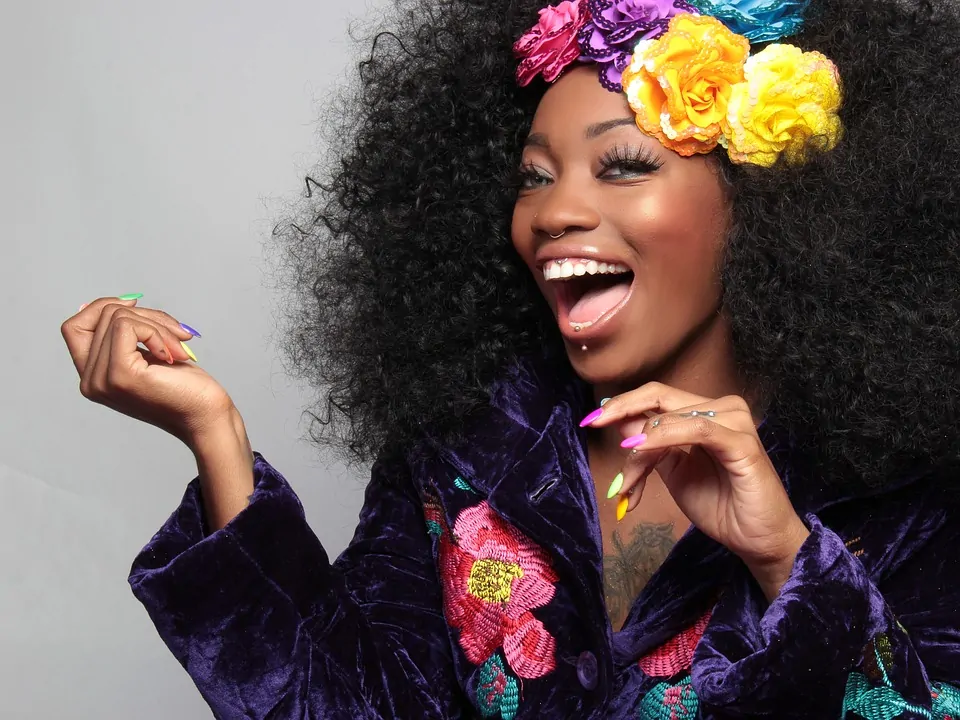
Table of Contents
As Jewelry Shopping Guide editors, we write about things that we love and we think you’ll like too. We often have affiliate partnerships, and may generate some revenue from these links at no cost to you.
Mood rings were a huge fad in the 70s and everyone was talking about them. They dropped out of the limelight for a while but have recently made a huge comeback. Today, mood rings are as popular as ever.
But do they really work? Can mood rings really show you your emotions? We advise wearing a mood ring with a pinch of salt
Let’s take a look at how mood rings work.
Birth of a Quirky Trend
Mood rings came out in 1975 by two New York inventors, Josh Reynolds and Maris Ambats. These rings were quite high in price, with silver rings costing about $45 and gold about $250 but they became a viral product at the time. Within 3 months, the inventors made over $1 million in sales.
Initially, these rings were taken seriously, and people did think that they could reflect how they were feeling. In fact, they were sold as ‘portable bio-feedback aids’.
However, as with any fashion trend, the interest in mood rings slowly faded and they’re now seen as one of the quintessential fashion trends of the 70s.
How Mood Rings Work
It all comes down to a science. A mood ring is essentially a liquid crystal thermometer that reacts to your body temperature.
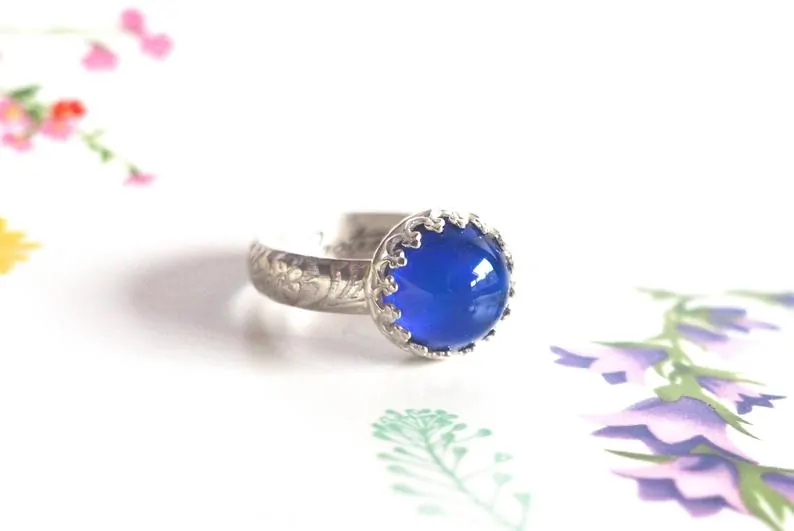
The ring is a capsule that holds the thermotropic liquid crystal. When the liquid detects a change in the atmosphere, the molecular shape of the crystal changes and alters the wavelengths of absorbed light. The crystal then changes color accordingly.
So what this means is that when your body temperature increases or decreases, the rings detect these changes and reflect them in the color. However, people soon realized that the ring reacted as much to environmental changes in temperature as it did to body heat.
Watch how this mood ring changes color as the temperature changes around it. It really is quite mesmerizing!
Mood Ring Colors
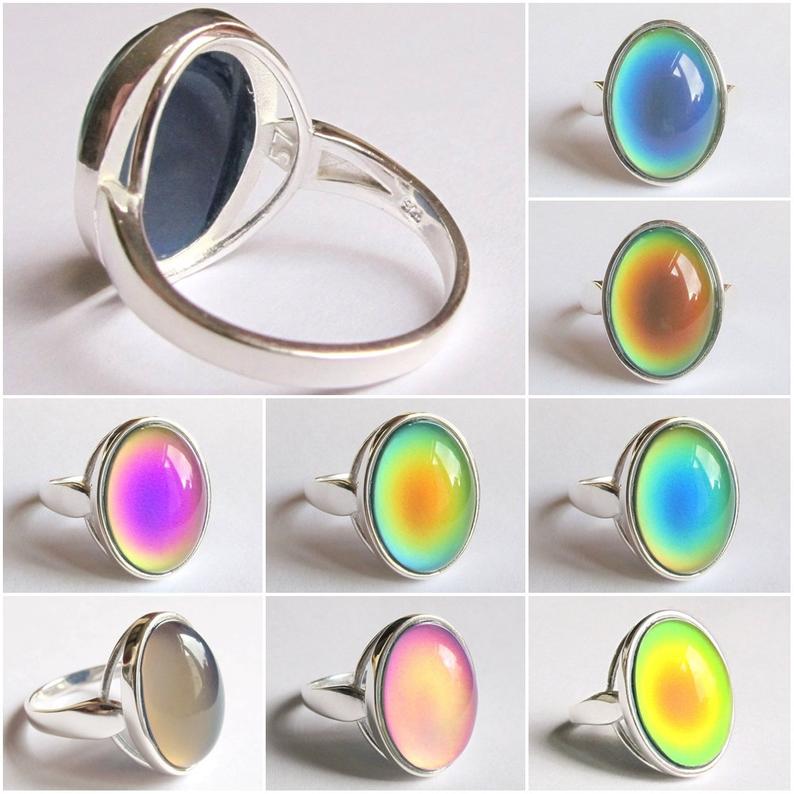
Mood rings can display on average about 8 to 9 colors, which each color corresponding to a mood. Your body temperature and your mood do affect the blood flow to your skin, which is why there is some scientific justification for how a mood ring works.
The mood ring color scale ranges from black (coolest) to violet (warmest).
Here are the colors from a mood ring listing on Etsy that we thought just beautifully summed up all the colors:
Cobalt Blue, Violet, Rose, Peach, Royal Blue, Indigo, Sky Blue, Turquoise, Forest Green, Lime, Sunflower Yellow, Honey Yellow, Sandy Brown, Dark Green, Midnight Black
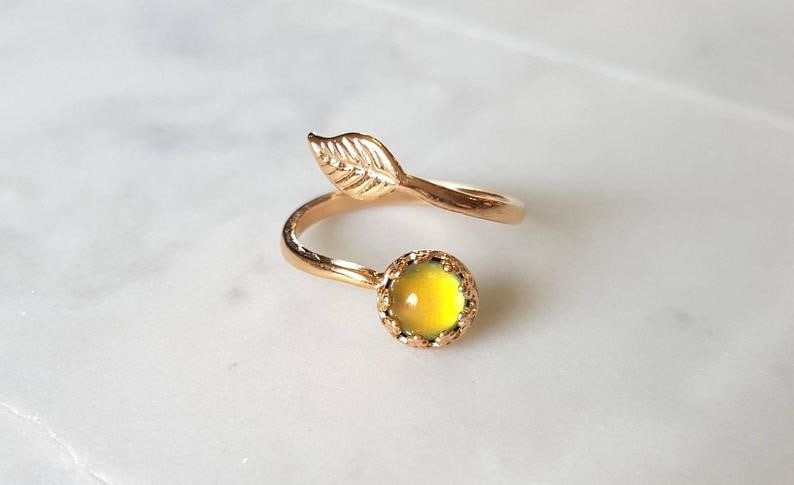
The rings are set to show a neutral color like a relaxing blue or green at your average body temperature, which is around 37 OC or 98.6 OF.
If you’re happy, angry, or excited, blood flow to your extremities increases and this raises your temperature. The ring will respond by reflecting warm colors on the violet end of the scale.
If you’re stressed or unhappy, blood flow is directed toward your internal organs rather than your extremities. Your body temperature decreases and the mood ring swings to the cold end of the color scale.
Because the color depends on the temperature, the mood ring fluctuates a lot.
Take off your ring showing a cool color and place it on your chest. The mood ring will immediately change to a warm color.
Does this mean you changed your mood?
No! It just means that different parts of your body have different temperatures at the same time.
Mood Ring Color Meanings
The trouble with modern mood rings is that different companies use different thermochromic pigments. This means that colors correlating to temperature can vary from ring to ring. There isn’t a universal interpretation of the colors.
These are the colors of the 1970s mood rings and their interpretation:

- Black/Gray – You’re tense, overworked, or stressed. It could also just be a damaged or broken ring.
- Brown – You’re nervous or worried. Your mind’s not rested.
- Yellow/Orange – You have mixed emotions and are feeling unsettled.
- Green – There’s nothing going on. You got average feelings.
- Blue – You’re feeling relaxed, calm, and rested. This is a neutral state.
- Violet – You’re happy, passionate, and have intense elevated feelings.
How Accurate Are Mood Rings?
We often get asked the question: Do mood rings work? Wouldn’t it be nice if we had a ring that could really tell us how we feel so we wouldn’t have to work it out for ourselves? Unfortunately, mood rings don’t really work and aren’t accurate at all. This is because of two reasons:
- Mood rings react to external temperature and not just to the temperature on your finger. You could be feeling stressed and overworked, but if you’re near the kitchen stove, it could come up as happy and excited. Mismatch much?
- Different mood ring companies use different chemicals to create their rings. So one ring variety could have blue as the neutral, rested color while another could have yellow. You’d have to refer to the color chart that comes with the ring to know for sure.
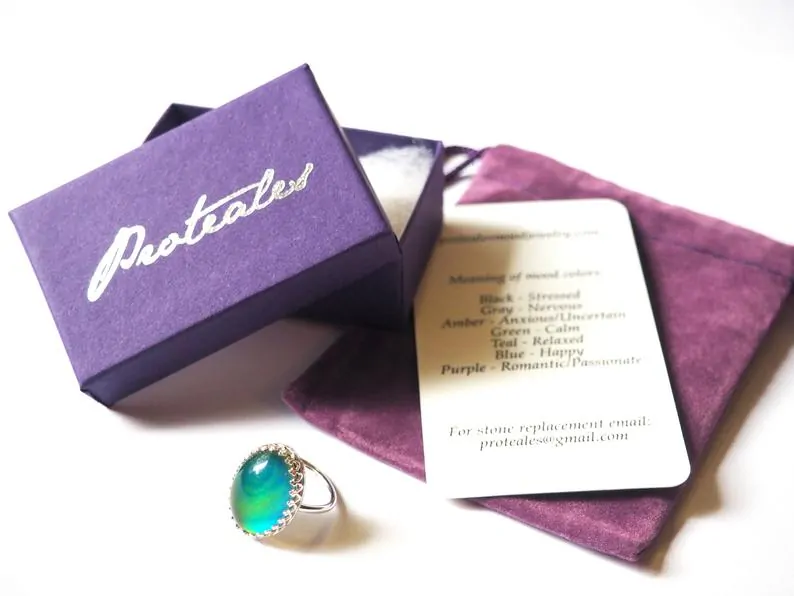
Mood Ring Jewelry Styles
Mood rings are back in vogue and have been redesigned to suit the 21st century. You still have your quintessential oval or round-shaped large mood ring in silver and gold, but you’ve also got a few different options that weren’t as available before.
The best example is the mood pendant. Instead of wearing a ring that catches everyone’s attention, a mood pendant can be more discreet. Also, because your chest has a different temperature to your finger, you’ll be seeing different fluctuations in color.
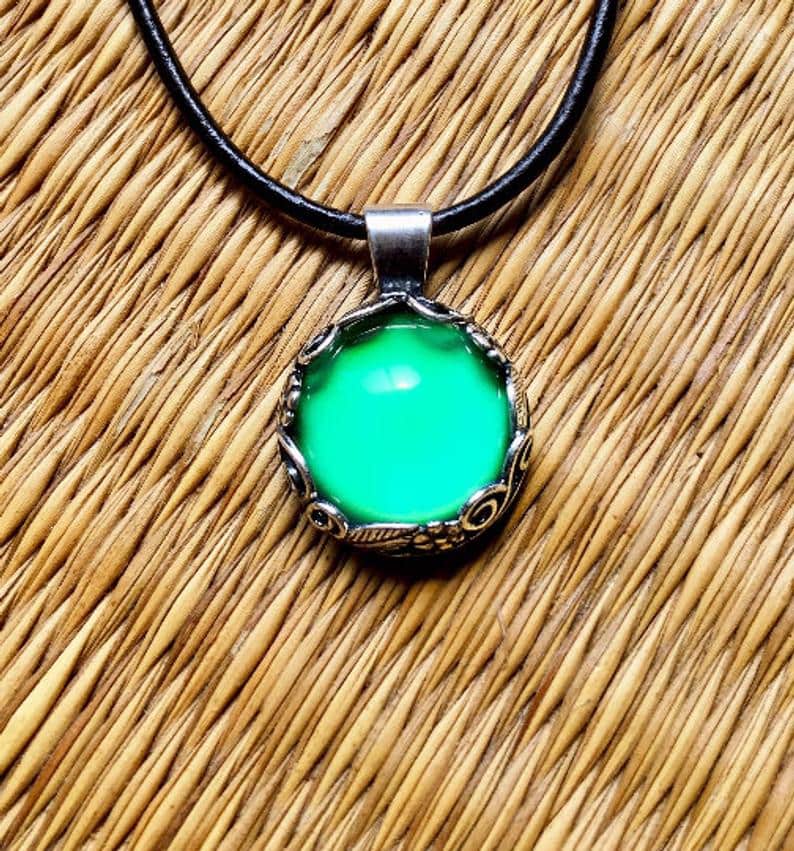
For a less statement look, try a mood band. These are not as visible as the large gemstone capsule on traditional mood rings. The ring works in the same way but is smaller and less obtrusive.
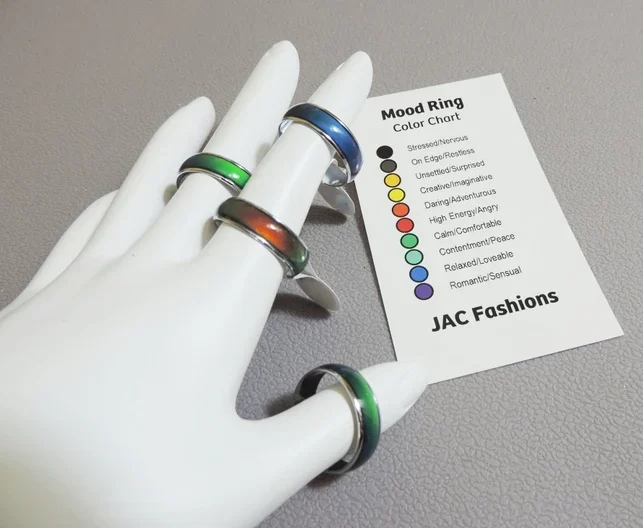
There is a range of unique mood ring styles featuring other motifs, a variety of colors, and beautiful designs. Mood rings generally have a boho, quirky look to them and go well with a casual, laid-back style.
Overall, mood rings add a pop of color and fun to your look. They can also be a talking point and make for some fun conversation.
How to Clean Mood Rings
It’s best not to submerge mood rings in water as this can affect how they work. Take off your mood ring when doing activities related to water and chemicals, such as cleaning, swimming, or doing the dishes.
If the ring is dirty, just wipe it with a damp cloth or give it a quick rinse under running water. Dry thoroughly afterward to avoid any residue staining the ring. If storing it away, keep the ring from harder objects as this avoids the crystal face getting scratched.
Take off the ring when engaging in vigorous activities like when doing sports as the ring could get knocked and break.
Having said all this, mood rings today are quite affordable so if you do wreck yours, you can always replace it without burning a hole in your wallet.
Where to Buy Mood Rings
There are several specialist stores that sell just mood rings, so these are good places to start your search. However, most of these retailers offer their products via Amazon, so searching for mood rings on Amazon is a great place to start.
We also recommend Etsy for their unique, hand-made artisan designs and high-quality mood rings. Search Etsy mood rings here.









